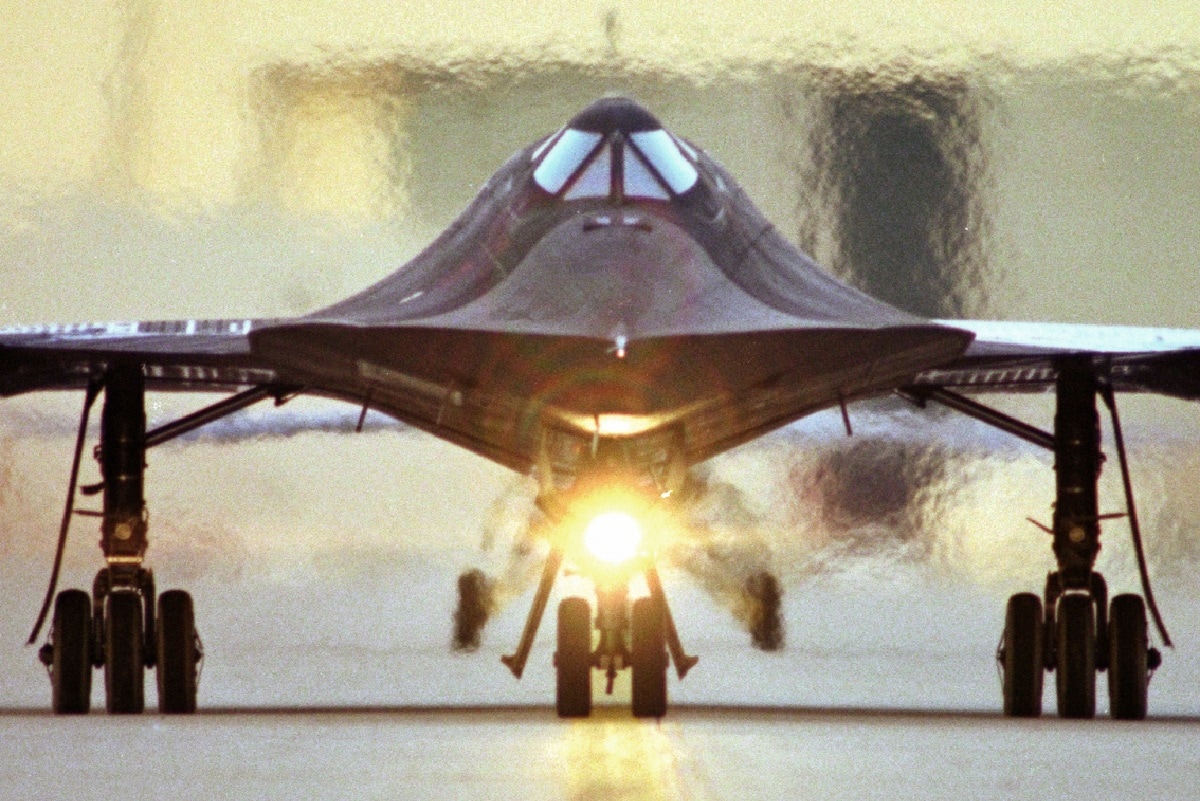Fact: The United States Air Force’s now-retired SR-71 “Blackbird” reached astounding high speeds that no enemy aircraft could hope to intercept it.
While other aircraft of the era could, in theory, reach speeds of 2,000 mph only in short, after-burner-driven bursts, the SR-71 needed to maintain the record-setting speed for hours at a time.
However, such great speed created some incredibly difficult issues for the aircraft.
The designers knew that at such velocity friction with the atmosphere would generate temperatures that could melt a conventional airframe. As a result, the aircraft received that iconic black paint. The paint could absorb the heat and in the process gave the plane that unofficial nickname, “Blackbird.”
However, it still much more than just a thick coat of paint.
In an email, retired USC Information Sciences Institute (ISI) software engineer Paul Raveling offered some insight and speculation in how the aircraft’s engineers dealt with the heat, and are continuing to address the challenges of the next generation of high-speed reconnaissance aircraft.
“Design for sustained aerodynamic heating is the most obvious issue,” Raveling, who has also served as a docent at Aerospace Museum of California, explained.
“SR-71s are well known for stretching about half a foot for cruise at about Mach 3, X-15s stretched a full foot in dashes to Mach 6,” he added, noting that the X-15 was developed under a joint U.S. Air Force/Navy/NASA project. Three of the advanced aircraft were built, and they made 199 flights between 1959 and 1968.
“Peak stretch actually was reached slightly after rocket burnout — one indication was that on two early flights of the X-15AA-2 the nose gear deployed when slowing through Mach 4. That was due to the design change from X-15-2 slightly underestimating how much to lengthen the nose gear release cable. That cable needed slightly more lengthening than first done to allow for the additional fuselage heating stretch that resulted from the 19-inch fuselage lengthening.”
At even higher speeds of – above Mach 5+, there would need to be additional features for coping with sustained heat loads and that could require new airframe designs.
The heat was just one of the issues, and likely would be for the SR-72 Darkstar – also known as the “Son of the Blackbird” – if and or when that aircraft ever does become a reality.
NASA had previously funded a Lockheed Martin study that found speeds up to Mach 7 could be achieved with a dual-mode engine combining turbine and ramjet technologies.
However, Raveling suggested, “On propulsion, SCRAMJETS are in fact the most plausible. In Mach 3+ cruise the J-58s and SR-71s operated mainly as ramjets by bypassing inlet air around the compressor, but they still used subsonic combustion. For a big step to higher Mach supersonic combustion is at least a virtue, and it might be a necessity.”
Then there is the issue of the fuel needed, especially for an aircraft that could cruise between Mach 3 and Mach 6, which would certainly require a very large supply of fuel.
“My offhand guess is that that doing this in an operationally practical way might need some advanced chemistry,” said Raveling. “The ideal fuel would supply the energy of something like the anhydrous ammonia on the X-15 but without need to carry a super-cooled oxidizer. The best enabler for a high-Mach SR-72 might be a breakthrough in fuel chemistry.”
Of course, it was already known that the SR-71 had to overcome its own fuel issues, and typically took off with only a partial fuel load and was refueled in flight shortly after takeoff. No one said being the fastest would ever be the easiest.
We thank Mr. Raveling for offering some insight into the discussion of the SR-71 and SR-72s.
Peter Suciu is a Michigan-based writer who has contributed to more than four dozen magazines, newspapers and websites. He regularly writes about military small arms, and is the author of several books on military headgear including A Gallery of Military Headdress, which is available on Amazon.com.

